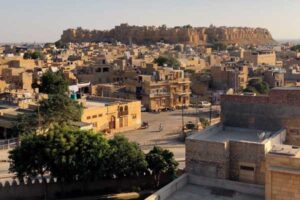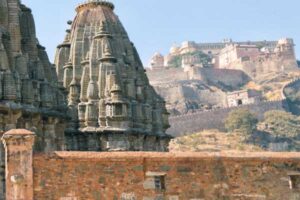Nahargarh Fort jaipur
Overview Of Nahargarh Fort
As a visitor to Jaipur, you have undoubtedly heard and maybe even read several tales about the illustrious history of the fort at Nahargarh. There’s a tall building nearby that provides Krishna Nagar a distinct vibrancy that draws in onlookers. What is the rationale for Nahargarh’s widespread recognition? What distinguishes it from other forts and buildings from the Rajput era?
As a visitor to Jaipur, you have undoubtedly heard and maybe even read several tales about the illustrious history of the fort at Nahargarh. There’s a tall building nearby that provides Krishna Nagar a distinct vibrancy that draws in onlookers. What is the rationale for Nahargarh’s widespread recognition? What distinguishes it from other forts and buildings from the Rajput era?
There is a lavish chamber for the monarch, while another nine suites are for the king’s concubines. The Madhavendra palace’s interiors include intricately crafted walls. They are adorned with magnificent fresco frescoes, making the already stunning structure even more so. The famous Nahargarh Zoo and Biological Park is within the fort’s walls. Wild creatures, such as Bengal tigers and Asiatic lions, are a highlight of both of these tourist destinations.One of the most well-liked features of Madhavendra Palace Park is its art park. It is home to several stunning pieces. Both of the fort’s restaurants provide spectacular vistas of the city below and serve spicy, savory Indian cuisine.
COST EFFICIENT SERVICES
Provide highly efficient services at very competitive prices.
ATTRACTIVE PACKAGES
Exclusively customized packages for Rajasthan & India tours.
CAR RENTAL SERVICES
Hire a taxicab in Jaipur for local sightseeing and outstation needs.
100% SATISFACTION
Our company provides 100% customer satisfaction as it is our top priority.
24+ Year
Experience
20+ Tour
Destinations
15000 + Happy
Customers
History Of Nahargarh Fort
Magnificent Nahargarh Fort, often called the Pink City, is situated on a hill above Jaipur. Maharaja Sawai Jai Singh II, the city’s founder, erected the enormous Amber Fort in 1734 with the dual goals of fortifying Jaipur and enhancing its standing and prosperity. Originally known as Sudarshangarh, the fort was renamed as “Nahargarh,” which translates to “Abode of Tigers.” In its whole history, Nahargarh has never been assaulted by the armed forces of its neighbours.The palace was first built as a retreat where the monarch and queen could unwind and enjoy the aerial view of Jaipur.
Europeans and the wives of British colonists were kept safe in the Fort during the Indian Mutiny of 1857, sometimes referred to as India’s War for Independence.Because of its location atop the world’s oldest mountain range, the Aravalli Hills, it offers a stunning view over the whole city as well as all of its contemporary, eye-catching lights. A personal renovation of the fort was overseen in 1868 by the Maharaja of Jaipur.
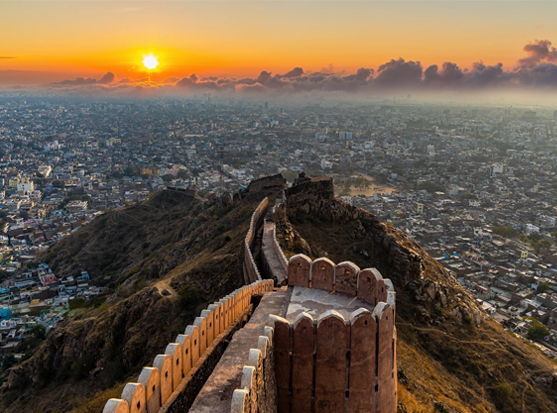
Architecture Of Nahargarh Fort
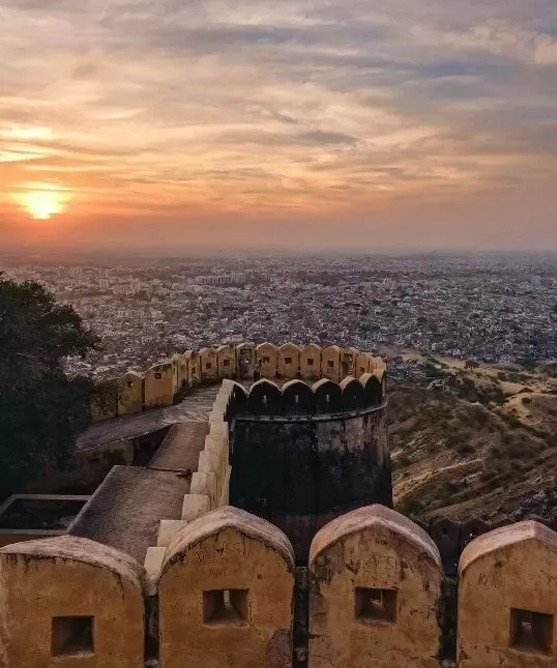
It was never under siege, even though this enormous stronghold was constructed to guard the city during wartime. Throughout the fort’s interior are several amazing constructions created in a style influenced by Indo-European architecture. It is believed that the distance is more than 230 metres, or about 700 feet.
Urban folklore claims that a ghost, often thought to be that of Nahar Singh, delayed the building of the fort. They attribute the delay to this ghostly entity. Thus, the fort was christened “Nahargarh” in order to allow construction of a shrine within the fort that would be devoted to the Rathore Prince in order to assuage his spirit.
Sawai Madho Singh constructed the two-story Madhavendra Bhawan office building within the castle. In addition to housing the king and his twelve queen consorts, it is divided into nine almost similar apartments or rooms. Each of these apartments has a lobby, bedroom, kitchen, bathroom, and/or shop space. The “House of Commoners,” also known as the “Diwan-i-aam,” is located on the royal grounds. The King would conduct court here to hear the people’s complaints. Though it was never physically assaulted, the Nahargarh Fort in Jaipur saw a number of important historical events, including the signing of the Maratha Treaty and the granting of sanctuary to Europeans.
A separate chamber, furnished in the queens’ manner, was given to the Maharaja. This was done in order to prevent the other queens from identifying him as the host queen.
In order to save floor space, a tank within the fort holds the water supply that is pumped down from the top of the hill. The large number of bats that live in the upper level chambers of the fort may also be seen by visitors. Proceed with caution if you’re the kind that gets scared easily. The stunning paintings that cover the fort’s halls draw inspiration from Rajput and European building styles. The walls of the connecting rooms and hallways are covered with elaborate pieces of minakari art, creating a visual feast.
The sight of the magnificent parade of horses, elephants, and other animals, together with the stunning surroundings, is enough to mesmerize everyone. Victorian flower paintings are highly prized for their creative ability and for offering a glimpse into Victorian culture. Up until April 1944, when the Jaipur administration no longer required the fort, a gunshot served as the time signal for reading solar time from the Samrat Yantra at the Jantar Mantar Observatory. This approach was followed through until April 1944. The Maharajas who ruled at that time also used it as a hunting lodge.
Wonderful views of the city below are available from a number of vantage points along the perimeter of the fort. This is a fantastic viewpoint for taking pictures of the cityscape. While Sawai Ram Singh was the Maharaja of Jaipur from 1883 to 1892, many palaces were built within the fort.
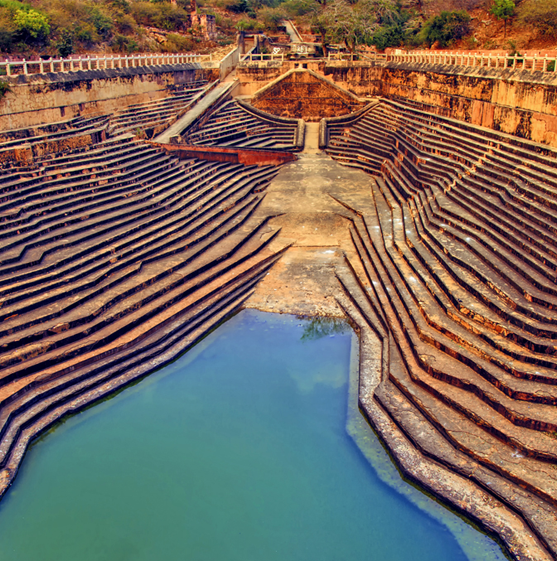
What To See

Scalloped arches, domed ceilings, and spacious gardens decorate the halls of the magnificent Nahargarh Fort. It was built in an Indo-European style. It was given the name “Nahargarh,” which literally translates to “fort of the lions.” The fort’s main entrance, the Padi Gate, is a striking example of the amazing engineering that went into the fort’s outer walls, which reach for km. Also, the Madhavendra Bhawan, or Madhavendra Palace, is the most famous structure inside the Nahargarh Fort. The construction of this 2 story palace was possible by order of Maharaja Sawai Madho Singh for his use and that of his 9 queens.
The palace has ten bedrooms, but only one is proper for the king himself; the other nine are suites for his wives. There are plush rooms, a lobby, a kitchen, and a store available to guests. An outside walkway connects one apartment to the others. It’s worth noting that the apartments have such designs that the king may pay a visit to any one of his nine wives without the others knowing. The Diwan-i-Aam is another stunning structure; it houses the grand hall where the monarch would have audience with the commoners to hear their grievances. There are 2 temples within the walls of Nahargarh Fort. The one honours the deity of the Jaipur kings. The other honours Nahar Singh Bhomia, the Rathore prince.
Things To Do In Nahargarh Fort
After you’ve had a chance to see the magnificent architecture and fascinating history of the Nahargarh Fort, it’s time to discover what else this area has to offer.
The Royal Gaitor Tombs
This location serves as a cemetery for many Maharajas, as the name implies. Buried here are a number of well-known monarchs, including Madho Singh II, Pratap Singh, and Jai Singh II. It is situated one km away from the fort. It is underneath the massive Nahargarh Fort, tucked away in the folds of several desert mountains. The city is well-known for its stunning structures, marble statues, and still-standing architectural wonders. After your tour of the fort, if you have time, we suggest visiting one of the neighboring bazaars to see the distinctive goods and crafts created by regional craftsmen.
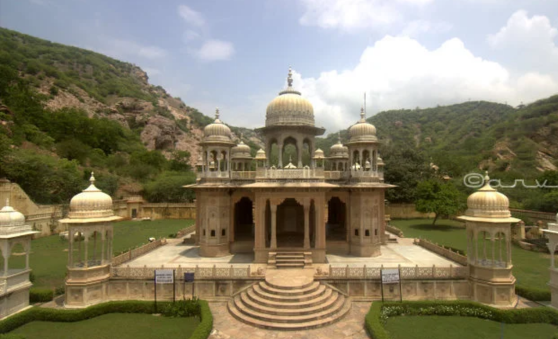
Jaipur Wax Museum
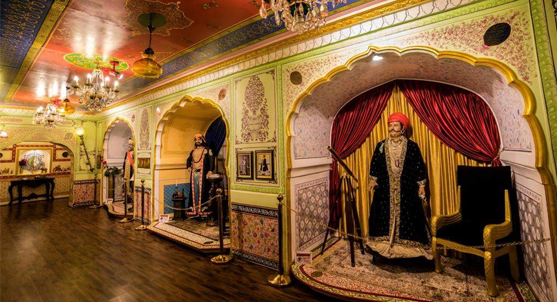
To the left of the main gate of the Nahargarh fort, a stunning attraction was constructed to support the Department of Tourism, the Department of Archaeology and Museums Jaipur, and the Government of Rajasthan. More than thirty-five silicon and wax sculptures glorifying athletes, Bollywood celebrities, social activists, independence fighters, and Jaipur’s Maharajas and Maharanis may be found in the wax museum in Jaipur.
Sheesh Mahal
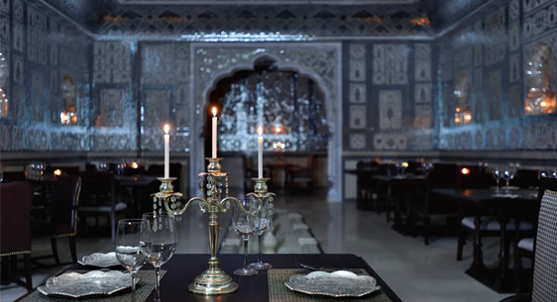
The Sheesh Mahal, popularly known as the Palace of Mirrors, is the most recent development in the vicinity of the Nahargarh fort. There is nothing like this edifice in terms of size and scope. Its creation used 25 million glass pieces, and it has mirror work, gold gloss, and Thikri. Now, the fort has a very spectacular appearance suited for a king or queen.
Sculpture Park

Beautiful sculptures adorn the grounds of this park, which is a portion of Madhavendra Palace in the vast Nahargarh Fort. It provides you with a glimpse into that period of history and transports you back to a time when kings reigned over their nations.
Other Structures
The Diwan-i-Aam, Khilbat Niwas, Shubhat Niwas, and Diya Burj are said to be additional notable architectural masterpieces housed inside the palace. Diya Burj is the highest point on the fort. It is reported that the Rajputs and the Mughals built complex networks of subterranean tanks and water conduits to store rainwater for use all year round, thereby resolving their water shortage.
Places To Eat Around Nahargarh Fort
Now is the season for gluttony.We understand that you are tired and interested in learning more about the restaurants and cuisines in the area around the fort. Let’s check out some of the dining options in and around the Nahargarh Fort.
Once Upon a Time At Nahargarh
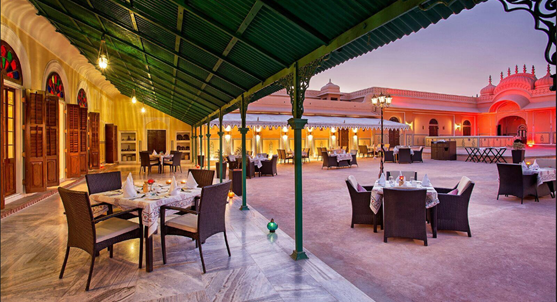
This restaurant is fit for a king or queen, with a cozy ambience ideal for unwinding after a day of sightseeing. While taking advantage of the plush seats, beautiful decor, and lovely dinnerware, you may have a drink of your choosing or a meal from any cuisine that strikes your fancy. Relaxing in the evening in this magical fort on the patio or indoor seating is a wonderful way to end the day.From this spot in the royal gardens, the Pink City may be seen in all its glory.
Padao Restaurant
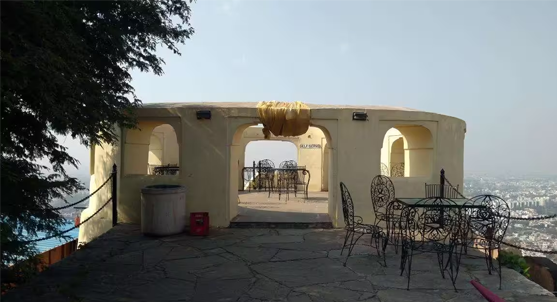
Come to the Padao restaurant, which is not only in a convenient position but also has a beautiful view, after a long day of sightseeing. The location is so close to the fort that it just takes around five to ten minutes to get there. It’s perfect for those who need a quick meal but don’t want to sacrifice quality. It is a great luxury to be able to put your feet up and rest after a day of arduous trekking.
Nahargarh Palace Hotel And Restaurant

As you suspected, it can be found inside the fort’s walls, where it offers a charmingly private setting and a stunning view to those who dine there. Visitors of all walks of life will enjoy the culinary journey, which includes both traditional Rajasthani fare and dishes inspired by other cultures. We recommend that you take a break from seeing the Nahargarh Fort to explore the local markets and try some of the city’s famed street food. Countless options mean you’ll have no trouble satisfying your need for a taste of the local cuisine.
How To Reach
Away from the Terminal Taking a cab or taxi is the quickest way to go from Jaipur International Airport to Nahargarh Fort, which is located around 28 km away. Therefore, every 20 minutes, there is a direct bus that runs from Jawahar Circle to Brahmpuri Khurra. The drive should take around 41 minutes.
Best Time To Visit
The best time to visit Nahargarh Fort is between October and the middle of March, when temperatures average about 20 to 22 degrees Celsius throughout the day. The fort welcomes visitors at this time. Therefore, take advantage of the pleasant temperatures and sunny skies by seeing the region and spending the day at the fort.





